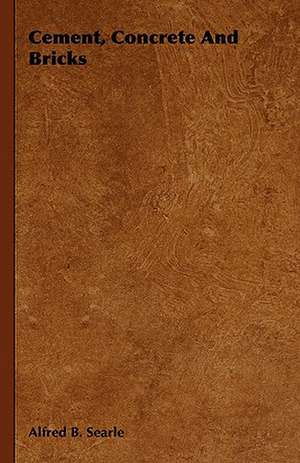Cement, Concrete and Bricks: Containing Full Directions for the Breeding, Rearing and Management of Canaries and Canary Mules; Cage Making; Formati
Autor Alfred B. Searleen Limba Engleză Hardback – 3 noi 2008
| Toate formatele și edițiile | Preț | Express |
|---|---|---|
| Paperback (1) | 223.72 lei 6-8 săpt. | |
| Crawford Press – 9 sep 2007 | 223.72 lei 6-8 săpt. | |
| Hardback (1) | 347.72 lei 6-8 săpt. | |
| Crawford Press – 3 noi 2008 | 347.72 lei 6-8 săpt. |
Preț: 347.72 lei
Nou
Puncte Express: 522
Preț estimativ în valută:
66.53€ • 69.47$ • 54.94£
66.53€ • 69.47$ • 54.94£
Carte tipărită la comandă
Livrare economică 15-29 aprilie
Preluare comenzi: 021 569.72.76
Specificații
ISBN-13: 9781443732024
ISBN-10: 1443732028
Pagini: 436
Dimensiuni: 140 x 216 x 29 mm
Greutate: 0.7 kg
Editura: Crawford Press
ISBN-10: 1443732028
Pagini: 436
Dimensiuni: 140 x 216 x 29 mm
Greutate: 0.7 kg
Editura: Crawford Press







